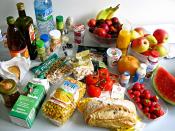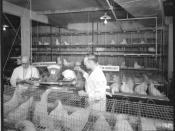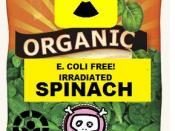Irradiation of Food as a Preservative
Irradiation of food as a preservative basically means taking the food and sterilizing it to destroy all bacteria that exists in it. It also increases the shelf life of the product and decreases the chance of it being spoiled. This process can be compared to basic pasteurization of foods. The biggest difference between the two methods is that they use two different forms of energy to make the food safe to eat. While regular pasteurization uses heat, irradiation uses a type of energy called ionizing radiation. Ionizing radiation is radiation that has enough energy, that it can remove the electrons from atoms.
The reason for using irradiation instead of pasteurization is because it is quicker. The process of irradiation is fairly simple. First, the food passes through what is known as the radiation chamber on a conveyor belt. This food then passes under a radiation beam, which destroys the bacteria quickly and efficiently.
Depending on the type of food the radiation time and strength of the beam vary. The most commonly used radionuclide for irradiation is called Cobalt-60. Two other sources of energy are electron beam generators and x-ray generators.
Cobalt-60 is the most efficient of all the methods of irradiation. It's benefits include deep penetration of food, low risk to the environment, and 95% of its energy can be used at any time. However, there are negative aspects of Cobalt-60 as well. The capsules that contain Cobalt-60 must be frequently refilled because they run out quickly. The irradiation process is also very slow with Cobalt-60.
Electron Beam Generators are another good source of irradiation. These generators produce so called "e-beams" with an electron bean linear accelerator. These accelerators are based on the same principle as a TV tube. These accelerators accelerate...


